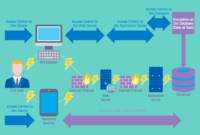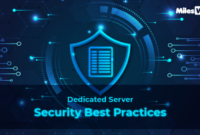Server security best practices: hardening your system and protecting your data are crucial for any organization that relies on digital infrastructure. The increasing sophistication of cyber threats necessitates a proactive approach to safeguarding sensitive information and critical systems. From implementing robust access controls and data encryption to staying ahead of emerging vulnerabilities, this guide explores essential strategies for securing servers and mitigating potential risks.
A secure server environment is the foundation of a reliable and resilient digital presence. It ensures the integrity of data, protects against unauthorized access, and minimizes the risk of costly downtime. By understanding the principles of server security and implementing best practices, organizations can build a robust defense against cyberattacks and maintain the trust of their stakeholders.
Hardening Your Server
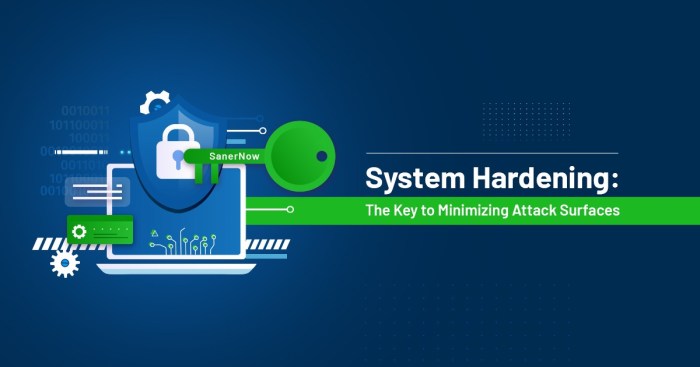
Server hardening is a crucial aspect of cybersecurity, encompassing a set of practices that aim to minimize vulnerabilities and strengthen the security posture of your server. This involves implementing a series of measures to protect your server from unauthorized access, malicious attacks, and data breaches.
By taking a proactive approach to server hardening, you can significantly reduce the risk of security incidents and ensure the integrity and confidentiality of your data.
Operating System Security
Operating system security is a fundamental aspect of server hardening. It involves securing the core software foundation of your server, which acts as the base for all other applications and services. A robust operating system security strategy ensures that your server is resistant to various threats and vulnerabilities.
- Regular Updates:Keeping your operating system up-to-date with the latest security patches and updates is essential. These updates often address known vulnerabilities and security flaws that attackers may exploit.
- User Account Management:Implement strict user account management policies, including strong password requirements, account lockout mechanisms, and least privilege access control.
A fortified server, like a well-guarded castle, requires a strong foundation. This means implementing robust security practices, such as firewalls and intrusion detection systems. But what about the inner workings? Choosing the right hardware and software, like selecting the perfect weapons for your knights, is crucial.
For gamers, this often involves a dedicated server, which can be optimized for performance and stability. Dedicated server for gaming: choosing the right hardware and software is a key aspect of ensuring a smooth and enjoyable gaming experience, just as a well-equipped castle is essential for its defense.
Ultimately, the goal is to create a secure and reliable environment that protects your data and allows you to focus on the game itself.
This minimizes the risk of unauthorized access and prevents malicious actors from gaining access to sensitive data.
- Security Configuration:Configure your operating system with a security-focused mindset. This includes disabling unnecessary services, hardening default configurations, and enabling security features like firewalls and intrusion detection systems.
Fortifying your server against intrusion is crucial, and this includes diligently securing your data. Cloud hosting, particularly when it comes to gaming servers, presents a compelling solution, offering the performance and reliability needed for seamless gameplay. Cloud hosting for gaming servers: performance and reliability provides a robust foundation, but remember that even in the cloud, vigilant security practices are paramount.
Maintaining a robust security posture across all facets of your infrastructure is essential for safeguarding your data and ensuring a smooth gaming experience.
- Security Auditing:Regularly audit your operating system for security vulnerabilities and misconfigurations. Tools like Security Information and Event Management (SIEM) can help you monitor system activity and identify potential threats.
Application Security
Application security focuses on securing the applications and services running on your server. It involves implementing measures to prevent vulnerabilities in the code and protect sensitive data processed by these applications.
- Secure Coding Practices:Implement secure coding practices to minimize vulnerabilities in your applications. This includes using secure libraries, validating user inputs, and avoiding common coding errors.
- Input Validation:Validate all user inputs to prevent malicious code injection attacks, such as SQL injection or cross-site scripting (XSS).
- Regular Updates:Regularly update your applications with the latest security patches and updates to address known vulnerabilities.
- Security Testing:Conduct regular security testing, including penetration testing and vulnerability scanning, to identify and mitigate security risks in your applications.
Network Security
Network security plays a vital role in protecting your server from external threats. It involves implementing measures to secure the network infrastructure and traffic flow to and from your server.
- Firewalls:Implement a robust firewall to block unauthorized access to your server. This can be a hardware-based firewall or a software-based firewall.
- Intrusion Detection Systems (IDS):Deploy an intrusion detection system to monitor network traffic for suspicious activity and alert you to potential attacks.
- Network Segmentation:Segment your network into different zones to isolate critical systems and limit the impact of security breaches.
- Secure Protocols:Use secure protocols like HTTPS for web traffic and SSH for remote access to encrypt data and prevent eavesdropping.
- Network Monitoring:Monitor your network traffic for unusual activity and potential threats.
Tools like network intrusion detection systems (NIDS) can help you identify suspicious patterns.
Server Hardening Techniques
Server hardening involves implementing a series of security measures to minimize vulnerabilities and strengthen the security posture of your server. This includes disabling unnecessary services, securing ports, and implementing firewalls.
- Disable Unnecessary Services:Disable any services that are not required for your server’s operation. This reduces the attack surface and minimizes the risk of exploitation.
- Secure Ports:Securely configure ports and services to allow only necessary traffic. This includes using strong passwords for remote access and limiting access to specific IP addresses.
- Implement Firewalls:Use firewalls to filter network traffic and block unauthorized access to your server.
- Strong Passwords:Implement strong password policies, including length requirements, character complexity, and password rotation.
- Regular Updates:Regularly update your server’s operating system, applications, and security software to patch vulnerabilities and enhance security.
- Security Auditing:Regularly audit your server’s security configuration and logs to identify potential vulnerabilities and security breaches.
- Principle of Least Privilege:Grant users only the necessary permissions to perform their tasks. This minimizes the impact of compromised accounts.
- Data Encryption:Encrypt sensitive data at rest and in transit to protect it from unauthorized access.
- Regular Backups:Regularly back up your server’s data to ensure data recovery in case of a security breach or system failure.
- Security Awareness Training:Provide security awareness training to your users to educate them about common security threats and best practices.
Hardening a Linux Server, Server security best practices: hardening your system and protecting your data
Hardening a Linux server involves implementing a series of security measures to minimize vulnerabilities and strengthen the security posture of your server. This includes disabling unnecessary services, securing ports, and implementing firewalls.
- Disable Unnecessary Services:Use the
systemctl disablecommand to disable unnecessary services. For example, to disable thetelnetservice:
systemctl disable telnet - Secure Ports:Use the
iptablescommand to configure firewall rules. For example, to block all incoming traffic on port 22 except from a specific IP address:
iptables-A INPUT -p tcp --dport 22 -s 192.168.1.100 -j ACCEPTiptables-A INPUT -p tcp --dport 22 -j DROP - Implement Firewalls:Use the
ufwcommand to manage the firewall. For example, to enable the firewall:
ufw enable - Strong Passwords:Use the
passwdcommand to set strong passwords for users. - Regular Updates:Use the
apt updateandapt upgradecommands to update the system. - Security Auditing:Use the
auditdcommand to monitor system activity and identify potential threats.
Protecting Your Data
Data is the lifeblood of any organization, and securing it is paramount. This section explores the crucial role of data encryption in safeguarding sensitive information stored on servers. It delves into various data encryption methods, comparing their strengths and weaknesses, and providing a comprehensive overview of popular data encryption tools and technologies.
Data Encryption: The Cornerstone of Data Security
Data encryption is a fundamental security measure that transforms data into an unreadable format, known as ciphertext, rendering it inaccessible to unauthorized individuals. This process involves using an algorithm and a key to encrypt and decrypt the data. By encrypting data at rest and in transit, organizations can significantly mitigate the risk of data breaches and protect sensitive information from unauthorized access.
Encryption Methods: Symmetric and Asymmetric
Data encryption methods can be broadly categorized into two main types: symmetric and asymmetric encryption.
Symmetric Encryption
Symmetric encryption uses the same key for both encryption and decryption. This method is known for its speed and efficiency, making it suitable for encrypting large volumes of data. However, it poses a significant challenge in key management, as the same key must be shared securely between the sender and receiver.
Fortifying your server against threats is paramount, and a critical component of this defense is ensuring data integrity. A dedicated server, like those offered here , provides an extra layer of security by offering dedicated resources and control. This not only minimizes potential vulnerabilities but also allows for robust backup and recovery strategies, safeguarding your data from unforeseen events.
Example:AES (Advanced Encryption Standard) is a widely used symmetric encryption algorithm.
Asymmetric Encryption
Asymmetric encryption, also known as public-key cryptography, utilizes two separate keys: a public key for encryption and a private key for decryption. The public key can be shared freely, while the private key must be kept confidential. This method offers enhanced security as it eliminates the need to share the private key, reducing the risk of key compromise.
Example:RSA (Rivest-Shamir-Adleman) is a widely used asymmetric encryption algorithm.
Data Encryption Tools and Technologies
A wide range of data encryption tools and technologies are available to organizations, each offering unique features, compatibility, and performance characteristics. The following table provides a comparison of some popular options:
| Tool/Technology | Features | Compatibility | Performance |
|---|---|---|---|
| AES (Advanced Encryption Standard) | High security, speed, and efficiency. Widely used for data encryption. | Compatible with various operating systems and platforms. | Fast encryption and decryption speeds. |
| RSA (Rivest-Shamir-Adleman) | Strong security and robust key management. Suitable for digital signatures and secure communication. | Compatible with various operating systems and platforms. | Slower encryption and decryption speeds compared to symmetric algorithms. |
| GPG (GNU Privacy Guard) | Open-source encryption tool for email, files, and directories. Provides strong encryption and digital signatures. | Compatible with various operating systems and platforms. | Offers good performance and flexibility. |
| BitLocker (Microsoft) | Full-disk encryption solution for Windows operating systems. Encrypts the entire hard drive, protecting data from unauthorized access. | Compatible with Windows operating systems. | Offers good performance and integration with Windows systems. |
| FileVault (Apple) | Full-disk encryption solution for macOS operating systems. Encrypts the entire hard drive, protecting data from unauthorized access. | Compatible with macOS operating systems. | Offers good performance and integration with macOS systems. |
Monitoring and Auditing: Server Security Best Practices: Hardening Your System And Protecting Your Data

Proactive monitoring and regular auditing are crucial components of server security. By continuously monitoring your server, you can detect and respond to security threats in real-time, minimizing potential damage and downtime. Auditing helps you identify security vulnerabilities, track user activity, and ensure compliance with security policies.
Monitoring Key Metrics
Continuous monitoring is essential for identifying potential security issues and ensuring optimal server performance. By tracking key metrics, you can gain valuable insights into the health and security of your server.
- System Performance:Monitor CPU usage, memory utilization, disk space, and network bandwidth to identify performance bottlenecks and potential resource exhaustion, which can be exploited by attackers.
- Network Activity:Track inbound and outbound network traffic, including IP addresses, ports, and protocols, to detect suspicious connections and potential intrusion attempts.
- Security Logs:Regularly review security logs for any unusual activity, failed login attempts, unauthorized access, and other suspicious events. This helps identify potential security breaches and attackers’ tactics.
Configuring and Using Security Auditing Tools
Security auditing tools play a vital role in tracking server activity, identifying potential vulnerabilities, and ensuring compliance with security policies. These tools automate the process of analyzing server configurations, identifying security gaps, and generating detailed reports.
- Log Analysis Tools:Tools like Splunk, Graylog, and ELK (Elasticsearch, Logstash, and Kibana) allow you to collect, analyze, and visualize security logs from multiple sources, enabling you to identify patterns, anomalies, and potential threats.
- Vulnerability Scanners:Tools like Nessus, OpenVAS, and Qualys provide automated vulnerability scanning, identifying security weaknesses in your server’s operating system, applications, and configurations. These scans help you prioritize security updates and patch vulnerabilities before attackers can exploit them.
- Configuration Auditing Tools:Tools like Ansible, Puppet, and Chef allow you to automate server configuration audits, ensuring that your server meets security best practices and complies with regulatory requirements. These tools can identify deviations from security policies and enforce desired configurations.
Incident Response
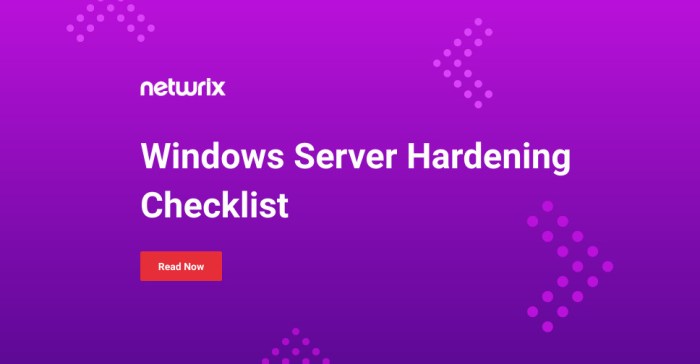
A comprehensive incident response plan is crucial for any organization that relies on servers. It Artikels the steps to be taken in the event of a security breach, minimizing damage and ensuring a swift recovery. A well-defined plan helps to streamline the response process, enabling efficient mitigation of the incident’s impact.
Securing your server is paramount, whether you choose a dedicated server, which offers ultimate control and security, or a VPS, which can be just as secure with proper configuration. The choice of which is best for your business depends on your specific needs and resources, and understanding the differences between the two is essential.
Dedicated server vs VPS: which is better for your business? Once you’ve chosen your server type, implementing strong security measures, such as regular updates, firewalls, and access control, is vital to safeguarding your data and ensuring your business runs smoothly.
Key Steps in Incident Response
The incident response process typically involves four key steps: containment, investigation, recovery, and post-incident analysis. These steps are interconnected and work together to address the incident effectively.
- Containment: The initial step involves isolating the compromised system or network to prevent further damage. This might involve disconnecting the affected server from the network, shutting down specific services, or blocking malicious IP addresses. The goal is to limit the spread of the attack and prevent further data loss or system compromise.
- Investigation: After containment, a thorough investigation is conducted to determine the nature and extent of the incident. This involves collecting evidence, analyzing logs, and identifying the root cause of the attack. The investigation helps to understand how the breach occurred, identify vulnerabilities, and determine the affected systems and data.
- Recovery: The recovery phase focuses on restoring the affected systems and data to their pre-incident state. This might involve restoring backups, reinstalling software, and implementing security patches. The goal is to bring the systems back online and ensure business continuity.
- Post-Incident Analysis: After the incident is resolved, a post-incident analysis is conducted to learn from the experience. This involves reviewing the incident response process, identifying weaknesses, and implementing improvements to prevent similar incidents in the future. The analysis helps to strengthen security measures and enhance the organization’s overall security posture.
Real-World Security Incidents
Several real-world security incidents highlight the importance of a robust incident response plan. For example, the 2017 Equifax data breach, which compromised the personal information of millions of individuals, was a result of a lack of timely patching and vulnerability management.
The incident exposed the significant financial and reputational risks associated with poor security practices. Another notable incident is the 2017 WannaCry ransomware attack, which affected organizations worldwide. This attack exploited a vulnerability in Microsoft Windows, encrypting data and demanding a ransom for its release.
The incident highlighted the importance of implementing strong security measures, such as patching systems promptly and keeping backups of critical data. These examples demonstrate the real-world consequences of security incidents and the importance of having a comprehensive incident response plan in place.
A well-defined plan helps organizations respond to incidents effectively, minimize damage, and ensure a swift recovery.
Server security best practices encompass a multifaceted approach, from diligently patching vulnerabilities to implementing robust access controls. For dedicated servers, a crucial aspect involves safeguarding against malicious actors, a task addressed in detail at How to secure a dedicated server from hackers and malware.
By understanding and applying these strategies, you can fortify your system and protect sensitive data from unauthorized access and compromise.
Best Practices for Specific Server Environments
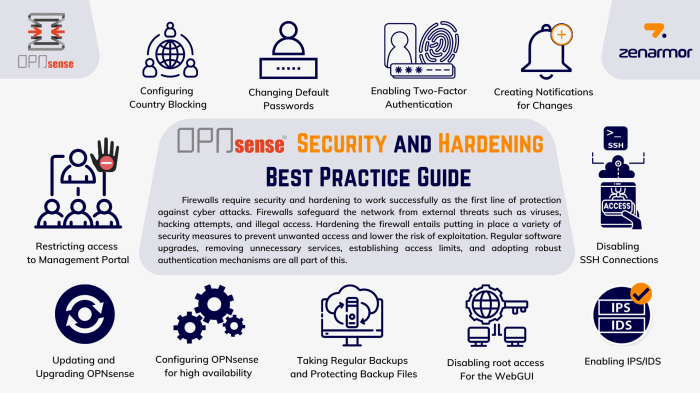
Securing specific server environments requires a tailored approach, considering the unique vulnerabilities and attack vectors associated with each type. This section delves into best practices for securing common server environments, such as web servers, database servers, and email servers. By implementing these security measures, organizations can significantly reduce their risk of data breaches and system compromises.
Web Server Security
Web servers are the backbone of many online services, making them prime targets for attackers. Securing web servers is crucial to protect sensitive data and ensure business continuity.
- Implement a Web Application Firewall (WAF):A WAF acts as a security layer between the web server and the internet, filtering malicious traffic and protecting against common web attacks, such as SQL injection and cross-site scripting (XSS).
- Regularly Patch and Update Software:Keeping web server software up to date is essential to mitigate vulnerabilities exploited by attackers. Patches and updates address security flaws, reducing the attack surface.
- Secure Configuration:Properly configuring web server software is crucial to prevent misconfigurations that could lead to security breaches. This includes disabling unnecessary services, limiting access to sensitive files, and implementing strong authentication mechanisms.
- Use HTTPS for All Communication:Encrypting web traffic with HTTPS ensures that data transmitted between the server and clients is protected from eavesdropping and tampering.
- Monitor Web Server Logs:Regularly monitoring web server logs helps identify suspicious activity and potential security threats. Analyzing logs can reveal patterns and anomalies that might indicate an attack.
Database Server Security
Database servers store critical data, making them highly valuable targets for attackers. Robust security measures are essential to protect database integrity and prevent data leaks.
- Implement Database Access Control:Restrict access to the database to authorized users and limit their privileges based on their roles and responsibilities. This principle of least privilege minimizes the potential impact of a compromised account.
- Encrypt Data at Rest and in Transit:Encrypting sensitive data stored in the database and during transmission helps protect it from unauthorized access even if the database server is compromised.
- Use Strong Passwords and Multi-Factor Authentication:Enforce strong password policies for database accounts and implement multi-factor authentication to enhance security. This adds an extra layer of protection against unauthorized access.
- Regularly Back Up and Test Recovery:Regularly backing up the database and testing the recovery process ensures data availability in case of a disaster or attack. This allows for quick restoration and minimizes data loss.
- Monitor Database Activity:Monitor database activity for unusual patterns or suspicious queries that could indicate malicious activity. This proactive approach can help detect and prevent attacks early on.
Email Server Security
Email servers are essential for communication and often handle sensitive information. Securing email servers is crucial to prevent data breaches, spam, and phishing attacks.
- Implement Strong Authentication:Use strong passwords and multi-factor authentication for email server accounts to prevent unauthorized access. This helps secure the server itself and protect user accounts from compromise.
- Use Email Filtering and Anti-Spam Measures:Employ email filtering and anti-spam measures to block unwanted emails, including spam, phishing attempts, and malware. This protects users from malicious content and reduces the risk of infection.
- Encrypt Email Communication:Encrypt email communication using protocols like TLS/SSL to protect the content from interception and eavesdropping. This ensures that emails are secure during transmission.
- Regularly Patch and Update Email Server Software:Keep email server software up to date to mitigate vulnerabilities that attackers could exploit. Regularly patching and updating ensures the server is protected against known security flaws.
- Monitor Email Server Logs:Monitor email server logs for suspicious activity, such as unusual login attempts, large email volumes, or attempts to send spam. This proactive approach helps detect and respond to potential security threats.
Staying Ahead of Threats
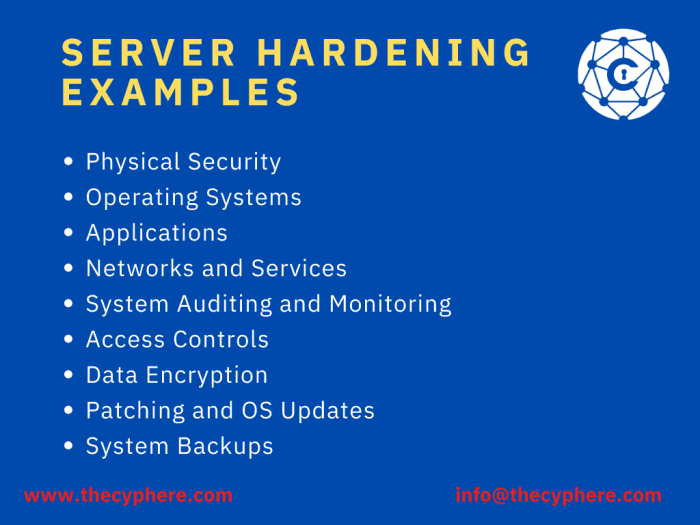
The cyber threat landscape is constantly evolving, with new vulnerabilities and attack methods emerging regularly. Staying ahead of these threats is crucial for maintaining the security of your server and protecting your data. This requires a proactive approach that involves staying informed about the latest security best practices and threat intelligence, and implementing appropriate security measures to mitigate potential risks.
Staying Informed About Emerging Threats
Staying informed about emerging threats is essential for staying ahead of the curve in server security. This involves keeping up with the latest security vulnerabilities, attack methods, and best practices. Here are some resources and tools that can help you stay informed:
- Security Blogs and Websites: Many reputable security blogs and websites provide valuable insights into emerging threats, security vulnerabilities, and best practices. Some popular options include Krebs on Security, Threatpost, and SecurityWeek.
- Security Newsletters: Several organizations offer free security newsletters that deliver regular updates on the latest threats, vulnerabilities, and security news.
- Security Forums: Online security forums are a great way to connect with other security professionals and learn about emerging threats from their experiences.
- Threat Intelligence Feeds: Threat intelligence feeds provide real-time updates on malicious activities, such as botnet command-and-control servers, phishing websites, and malware distribution networks.
Security Awareness Training
Security awareness training is crucial for fostering a culture of security within an organization. It helps employees understand the importance of security, recognize common threats, and practice safe computing habits.
- Phishing Awareness: Phishing attacks are a common way for attackers to gain access to sensitive information. Security awareness training can help employees identify and avoid phishing emails and websites.
- Strong Password Practices: Employees should be trained on the importance of using strong passwords and avoiding the reuse of passwords across multiple accounts.
- Data Security Practices: Training should cover best practices for handling sensitive data, such as avoiding sharing confidential information over unsecure channels and encrypting sensitive data when it is stored or transmitted.
- Social Engineering Awareness: Social engineering attacks rely on human interaction to trick individuals into revealing sensitive information or granting access to systems. Security awareness training can help employees recognize and avoid social engineering tactics.
Summary
Securing your server environment is an ongoing process that requires vigilance and adaptability. By adopting a comprehensive approach that encompasses hardening, data protection, access control, monitoring, incident response, and staying informed about emerging threats, organizations can significantly reduce their vulnerability to cyberattacks.
Remember, a secure server environment is not a destination but a journey that requires continuous improvement and proactive measures to safeguard your digital assets.
